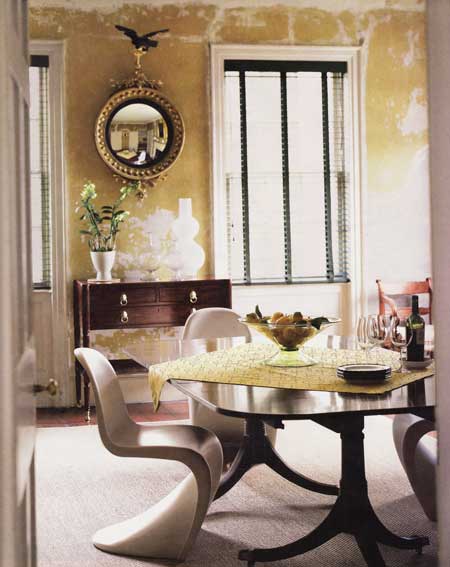This week, The Scottish Home is delighted to introduce a guest post contributed by London Interior Designer Greg Kinsella. We find these tips fascinating, since it's a sad fact that too many of us impulsively buy wonderful antique or vintage items, but are then not entirely sure how best to display them in our homes!
There are certain rules of thumb you can employ for placing antiques in your home so that they exude just the right amount of charm without being pretentious or over-bearing. Here are 5 tips to help you make the most of your treasured collections:
1. Grouping
Any savvy merchandiser will tell you that placing an odd number of similar pieces of collectible antiques in a display will create the most appealing arrangement. So when arranging items on a shelf, follow this rule to draw the eye. Also you want to be sure not to group items of different genres together. In other words, it is better to have a shelf just for your glass antiques and come up with a different way to display antiques of another material or style.
2. Furniture Placement
To create a specific sense of an particular era, you can make theme placements for your antique furniture that feature a certain style in a room. For instance, if you have a collection of furnishings from a certain era, put them all in the same area and add any knick-knacks that match that time period in the same area, especially lamps and artwork.
3. Colours
When you paint the rooms containing your antiques, try to paint at least one wall the same color tone as your displays and furnishings. For pottery and earthware collections, choose a soft beige or brick red hue that will accent their natural colors If you are working with items like French provincial furniture, consider using a soft yellow or cinnamon color to highlight the decorative inlays and hardware features.
4. Mixing Vintage with Modern
Don't be shy about adding a few antique pieces to your ultra-modern rooms. The contrast between the old and the new accents your antiques and softens the stark effect which often results from the clean, modern lines of contemporary room designs.
5. Lighting
If your beautiful antique collection is not well lit, it runs the risk of not being noticed. Use embedded lights in display cases that eliminate shadows and have different watt bulbs for various items. Also consider overhead lighting fixtures or recessed ceiling spotlights to accent antique artwork or furniture groupings. A pair of vintage lamps strategically placed in your groupings can be used to add splashes of light to accent your most valued collections




